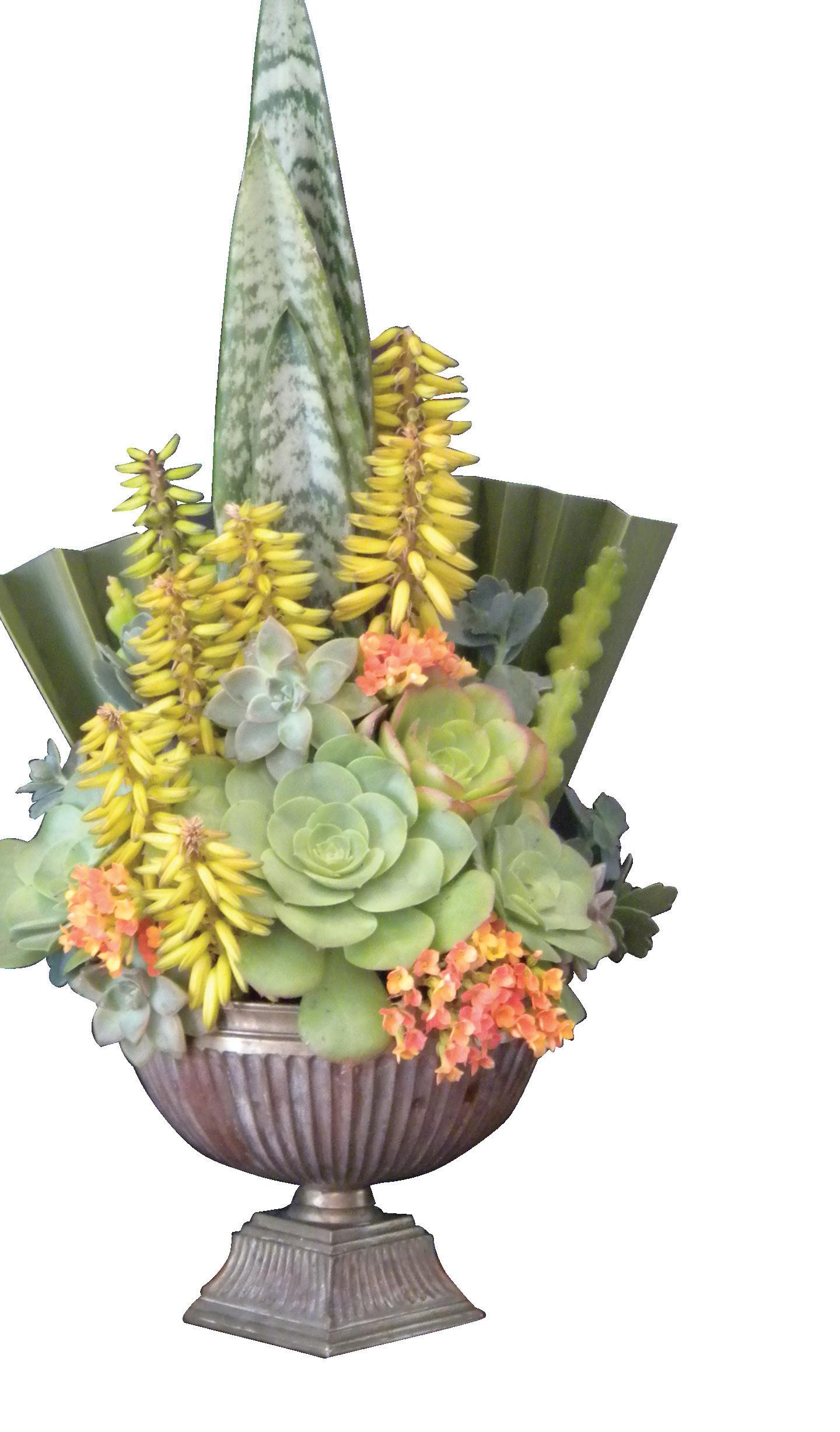
3 minute read
Floral Design Explained
Although not traditional material, succulents have beautiful textures and colors for floral arrangements.
Show Time
Advertisement
Judging for annual exhibition follows strict guidelines
The Coronado Flower Show, started in 1922, is our town’s longest running tradition. Gardening is still as popular now as it was 100 years ago, bringing together people from all walks of life. A lot of things have changed over
the last century, but the Flower Show has continued to be a great event year after year.
The Coronado Flower Show is a Standard Flower Show, conforming to guidelines of National Garden Clubs (NGC). There are five divisions: horticulture, design, educational, youth and botanical arts. The Design Division is one of the most anticipated – and least understood – parts of the show. The division has top-notch designers entering incredibly beautiful and creative floral designs in a number of sections. It’s hard to grasp why one design has won over another but with some information about how the judges come to their conclusions, the Design section is a lot less intimidating and much more interesting. Judging follows strict criteria using a Design Scale of Points: Conformance to the Flower Show schedule
(following directions); Design (principles and elements of design); Artistic Concept (selection and organization

Miniature floral arrangements, typically between 3 to 6 inches high, are known as Petite Designs under Flower Show rules. Done correctly, petite arrangements are miniature versions of full-size flower arrangements.
of materials); Expression (interpretation by exhibitor); and Distinction (superiority in all respects including plant materials, etc.) Flower Show judges are trained and accredited by NGC. It takes a few years and a lot of work to become an accredited flower show judge. Design counts for 42 out of 100 points in the NGC Judges Design Scale of Points. Elements and principles are fundamentals in art, which I became aware of when I took some floral design courses. Think of elements as the ingredients of a recipe and principles as the recipe itself. Elements are the tangibles and principles are how to use the tangibles.
I love learning something that changes my perspective. Elements and principles of design were a big shift in creative thinking for me. I unknowingly used them in practice for years, but now I consciously
Elements of Design • Color. The characteristic of light by which the individual perceives objects or light sources; how eyes see and interpret wavelengths of light • Form. A three-dimensional object • Light. Illumination necessary for vision • Line. One-dimension visual path through design • Pattern. Design formed by solids and spaces between them • Size. The perceived or visual dimensions of components rather than actual dimensions • Space. The open area in and around a design. There are three kinds of space: total space, space within plant material, space established in design • Texture. Surface quality of a material
Principals of Design • Balance. Visual balance or stability • Dominance. The greater impact of one element over the others • Contrast. The use of opposite characteristics to emphasize differences • Rhythm. Created by a dominant visual path of lines, forms, and/or colors • Proportion. Comparative relationship of areas and amounts • Scale. The size relationship of one object compared to another

The Design Scale of Points is used by judges to grade entries, with the use of Elements and Principles of Design counting for 48 out of 100 points.
use the structure of elements and principles, whether it’s in floral design, my garden or photography. I don't aspire to be an accomplished floral designer, but floral design is a fun, creative outlet. My challenge is creating designs with plants from my garden rather than
buying plant material. Most of my designs are made with succulents, which aren’t considered traditional materials, so I quite often lose judging points in the conformance category.
But I enjoy the design process. That's what matters most.











